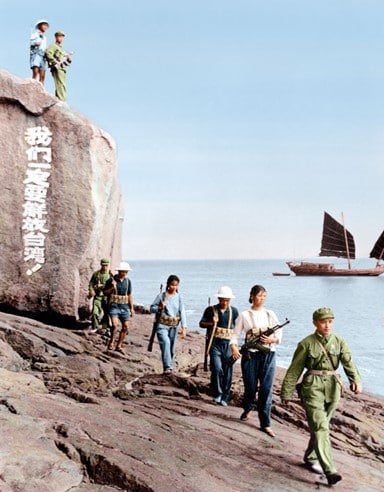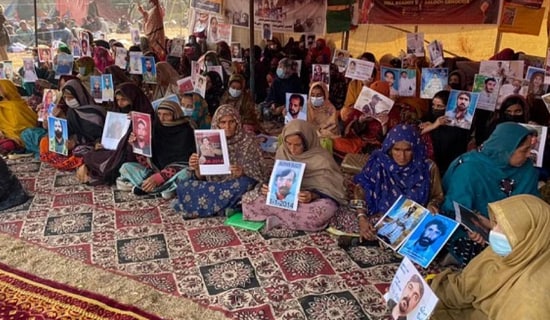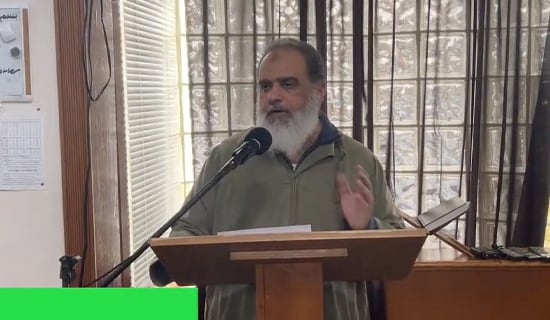Taiwan has been the perennial flashpoint between the United States and the People's Republic of China (PRC). This has been the case for decades. While each side has consistently pointed to the Three Joint Communiques as the basis of the bilateral US-PRC relationship, the reality has always been that each side had nuanced, if not different, interpretations of these documents, particularly as they pertained to Taiwan.[1] Furthermore, the Shanghai Communique is largely comprised of unilateral statements and declarations that highlight that the two sides held differing opinions on key issues. Additionally, the US also had the Taiwan Relations Act and the Six Assurances as relevant framing documents. Despite the incongruous frames of reference (or at least the incongruous interpretations thereof), both sides have historically admonished the other to not change the status quo over Taiwan. On the heels of what many are now referring to as the Fourth Taiwan Strait Crisis, we have to wonder what status quo even means 50 years after the original Shanghai Communique.[2]

Civilian PRC soldiers in Xiamen, Fujian, patrolling the coast, 1960s. The words on the rock read "We will liberate Taiwan
It is generally accepted that status quo is a Latin phrase that means the existing or current state of affairs usually in regards to political, social, or military issues. Without getting into a debate on the taxonomy of the phrase, within the context of Taiwan and Mainland China, much has changed over the decades and the current state of affairs is not reflective in any sense of what the supposed status quo was in 1972, 1979, or 1982, the respective years of each communique. Today, both Taiwan and Mainland China are completely different from how they were back then. Whether the status quo within both geographic entities has changed due to intentional governmental and political policies or social and political evolution is somewhat irrelevant and depends on the historical perspective of each. The reality is that the status quo has already changed and continues to change.
In the 1970s, one could argue Taiwan and the PRC both represented repressive, one-party authoritarian regimes. Fast-forward to the 21st century and Taiwan is truly a beacon of democracy in Asia and the world. Its government evolved peacefully from martial law to a multi-party representative democracy which is now led by a female president. Its national assembly has one of the highest percentages of female legislators in the world and it has enacted the only LGBTQ protection enshrined in law anywhere in Asia. Freedom of expression, the press, and religion are universally accepted and are givens in Taiwan society. The example of Taiwan demonstrates that democracy is something that cannot only exist but thrive amongst an ethnic Chinese population. This is definitely a change in the status quo when compared to when the Kuomintang fled to Formosa in 1949.
The PRC's status quo has changed too. No longer a backwards, agrarian country barely able to feed itself, it now commands the second largest economy in the world, has a military with a growing nuclear triad, and shapes international affairs despite its own declaration within the Shanghai Communique of 1972 that "China will never be a superpower and it opposes hegemony and power politics of any kind." Juxtaposed with the objectives of the so-called China Dream and the fact that he has jettisoned any pretexts of Deng Xiaoping's 24-character maxim of keeping a low profile, Xi Jinping's China bears no resemblance to that of his communist forebearers.[3]
These changes in the individual status quo of the PRC and Taiwan are self-evident. In the case of Taiwan, they are the result of a societal evolution, not a violent revolution, that ended decades of martial law in a peaceful hand-over of government after free and fair elections. In the PRC, Deng Xiaoping set the Chinese Communist Party (CCP) on a path of economic liberalization, capitalism with Chinese characteristics, while not giving up the reins of political power one iota. China's status quo, domestically in particular, was changed due to very specific and intentional policy decisions. So, while both places changed in remarkable ways for different reasons, the US and the PRC still called for maintenance of the status quo across the Taiwan Strait. Yet, while the US has assiduously nursed this concept across generations, the Chinese undertook unilateral steps to change the status quo by design and by force.
SUPPORT OUR WORK

Perhaps anticipating that the people of Taiwan may never want to unify with the so-called motherland since the status quo on each respective side of the Strait has changed so much, the PRC developed an arsenal of tools to coopt, cajole, coerce, and even compel its Taiwanese compatriots across the elements of comprehensive national power. Over the years, China has deployed thousands of missiles targeting its brothers on Taiwan, unleashed economic sanctions against Taiwanese agricultural products, and utilized dis- and mis-information to try to undermine Taiwanese institutions and destabilize the island. Instead of incentivizing a process leading to eventual unification, China sought to preempt or punish Taiwan for choosing a path that did not conform to that of the CCP. Particularly anathematic to Beijing was the people of Taiwan handing power from the Kuomintang (KMT) to the Democratic Progressive Party (DPP). This demonstrable act of political self-determination frightened the politically monopolistic CCP into increasingly utilizing intimidating approaches to Taiwan culminating in the consistent refusal to renounce the use of force. As if to underscore the point, China's rubber stamp legislature even passed the Anti-Secession Law in 2005 enshrining this Damocles Sword over the heads of the 23 million people of Taiwan.
Since 2020, the threat of the potential, if not inevitable, use of the People's Liberation Army against Taiwan has become more acute. Chinese military aircraft and ships routinely enter Taiwanese waters and their air defense identification zones (ADIZ) as well as cross the median line. The numbers have already surpassed hundreds of incursions. On June 13, 2022, the Chinese Ministries of Foreign Affairs and National Defense declared that the PRC has "sovereignty, sovereign rights, and jurisdiction" over the Taiwan Strait rejecting any previously held concept of international waters. Moreover, the Chinese overreaction to the second visit of a speaker of the U.S. House of Representatives to Taiwan on August 2, 2022 again demonstrated the Chinese abandonment of the previous status quo by firing missiles into the territorial waters of Taiwan and the exclusive economic zone (EEZ) of Japan. These unprecedented actions yet again reflect the PRC altering the so-called status quo.
Frankly, from a military perspective, the Chinese have spent the last several decades changing the status quo because it served their operational purposes of demoralizing the Taiwanese population, desensitizing Taiwan to intrusions and military activities, and driving up the operational tempo of the Taiwanese Armed Forces to an unsustainable level. It is quite conceivable that with this latest military escalation, the Chinese were waiting for a pretext to again unilaterally change the status quo allowing for even greater operational freedom in the air and sea surrounding Taiwan. In retrospect, similar salami-slice tactics have also been employed in the South and East China Seas to change facts on the ground favoring the PRC.
We must ask ourselves what is actually meant by the status quo and if we should even be referring to this nebulous concept any longer. China has changed the state of affairs over and over again not only vis-à-vis Taiwan, but also with other neighbors including India, Vietnam, and the Philippines. One might conclude that changing the status quo is actually a Chinese tactic as well as a desired end state. Thus, it appears pointless to continue the charade of calling for the maintenance of the status quo when this concept does not appear to still be applicable to the situation across the Taiwan Strait. The rhetorical gymnastics do not serve a purpose other than offering the CCP leadership justification for its increased escalation of coercion and aggression against the forces of democracy not only in Taiwan, but also in the U.S. and in other like-minded countries. It is time to acknowledge that the status quo is dead, long live the status quo!
*Heino Klinck is a Member of MEMRI's Board of Advisors. He served as the U.S. Deputy Assistant Secretary of Defense for East Asia, 2019-2021. As an Army Foreign Area Officer, he served as a military attaché in China, 2004-2010.
[1] For original texts of the Three Communiques and other relevant documents, see Taiwandocuments.org.
[2] Many observers are referring to the Chinese military reaction to the visit of the speaker of the U.S. House of Representatives to Taiwan on August 2, 2022 as the fourth Taiwan Strait Crisis. The previous three crises occurred in 1954-55, 1958, and 1995-96.
[3] The China Dream refers to General Secretary Xi Jinping's vision for a prosperous and powerful PRC. Deng Xiaoping's 24-character has been translated to mean "Observe calmly; secure our position; cope with affairs calmly; hide our capacities and bide our time; be good at maintaining a low profile; and never claim leadership."




